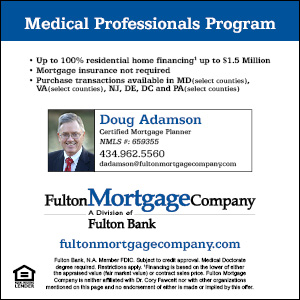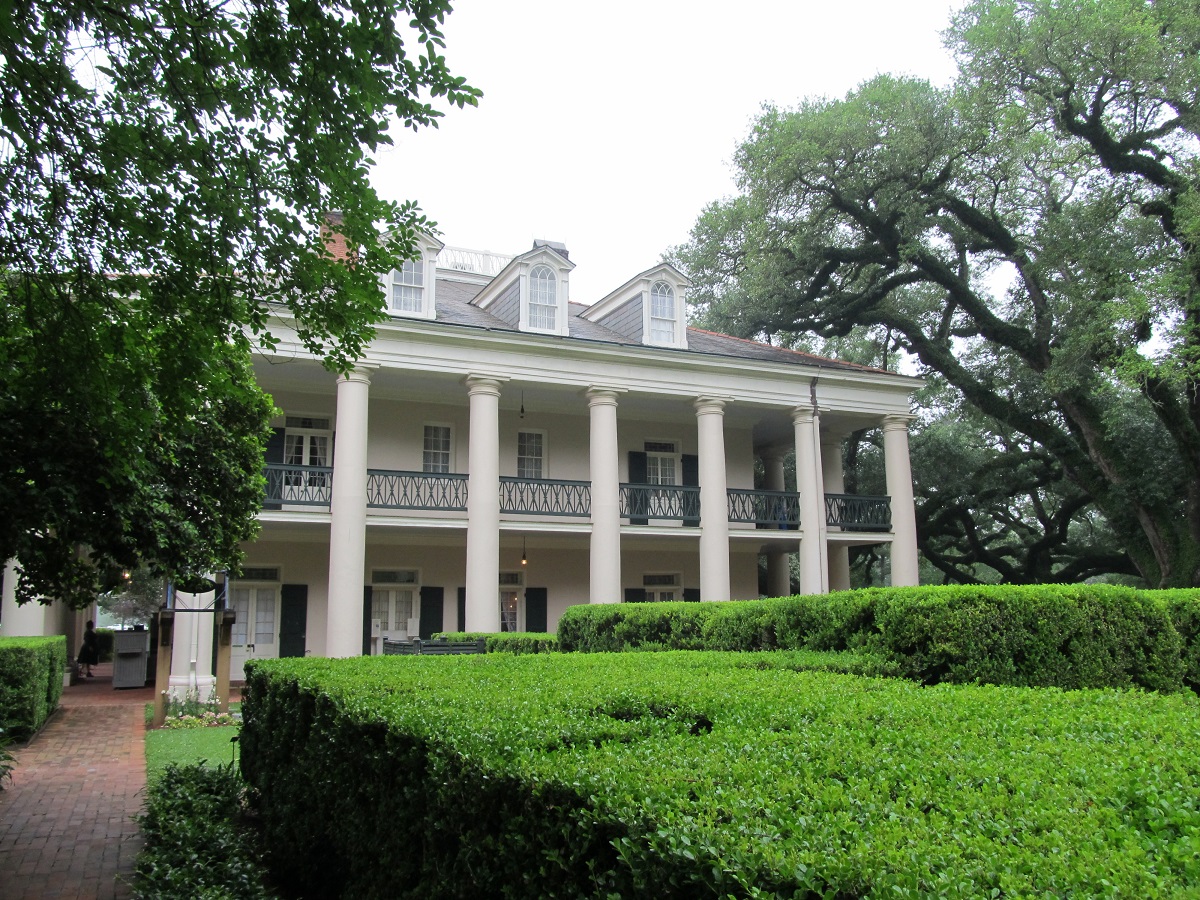(Today’s guest post comes from Doug Adamson from Fulton Mortgage Company, an advertiser on my site. Doug helps doctors leverage their earning potential by getting doctor mortgages with low down payments and no mortgage insurance. I had always been opposed to adjustable rate mortgages, until he showed me this article. Now I can be convinced that there is a place for this option for those who wish to rapidly pay off their debts.)
During the past forty years, fewer than one percent of homeowners have held the same mortgage for more than ten years. Most people move every seven to nine years and a similar number refinance their mortgage at least once between buying and selling. But Freddie Mac reports that eighty to ninety percent of homeowners finance with a 30-year or 15-year fixed mortgage, leaving only ten to twenty percent enjoying the benefits of an adjustable rate mortgage (ARM). Is this because when these homeowners gaze into their crystal ball it tells them, incorrectly, that they’ll still be holding their initial mortgage fifteen or thirty years hence? That is certainly part of the answer, but I believe it stems mainly from a stubborn myth that fixed-rate mortgages are always best and that ARMs should forever be avoided.
Where did this myth come from and why has it led to most people buying the wrong mortgage product? Back in the pre-mortgage-crisis days before 2008, ill-advised government policies designed to stimulate home ownership led to a significant demand-supply imbalance in the housing markets. Too much demand relative to supply led to rapidly rising home prices and swiftly declining homeownership affordability. But there was no commensurate drop in the lure of the homeownership dream. Enterprising, though ethically-challenged mortgage lenders, wished to close the gap between housing desirability and affordability. They dramatically expanded to the general public access to a mortgage product, the “option-ARM”, invented and originally intended for use only by high-net-worth borrowers.
The option-ARM pitch, made by unscrupulous mortgage brokers, went something like this. “I can give you a 1.5 or 2.0 percent rate to help you afford that $500,000 home.” When questioned why the rate was so low and how it might adjust in the future, the broker said not to worry. “If you don’t like the principal and interest payment, just pay the interest. And if the interest-only payment gets out of your comfort zone, you have the option to pay part of the interest and roll the rest into your loan.” Millions of homeowners fell for this pitch and suffered significant financial hardship when their mortgage rates began to rise monthly, after a 3-month teaser period, their mortgage balances increased due to negative amortization and their home values subsequently declined when the housing bubble burst. And the myth began that ARMs are bad and that only fixed-rate mortgages are good.
It is true that option-ARMs, no longer available, would be bad for all but well-hedged borrowers, those with the financial resources to pay off a loan when the adjusted rate is no longer attractive. But hybrid or fixed-term ARMs are a good and appropriate option for the vast majority of homeowners. As the appellations suggest, 5/1, 7/1, 10/1 and 15/1 fixed-term or hybrid ARMs feature a rate fixed for 5, 7, 10 or 15 years followed by a one year adjustable rate mortgage (ARM). And the shorter the fixed period you choose, the lower is the rate you pay.
Once the fixed period expires, your loan converts automatically to an ARM and your rate adjusts, subsequently, once every year. Your adjusted rate is calculated by combining an index, typically the one-year average of the London Inter-Bank Offered Rate (LIBOR), and a predetermined margin, usually 2.25% to 2.75%. The LIBOR index has hovered in the 0.5% to 2.75% range over the past ten years. And hybrid rate adjustments are capped, between 1% and 5% with initial adjustment (the first year following fixed-term expiration) and 5% and 6% loan lifetime, above your fixed-term rate.
So why is your rate lower with a fixed-term ARM? It is because you pay an insurance premium when you get a fixed-rate mortgage. I’m not talking about mortgage “default” insurance, but mortgage “rate” insurance. When you buy a fixed-rate mortgage, you pay a higher rate than for an ARM because you are asking the lender to protect or insure you against the risk of your home loan rate rising. If inflation causes rates to rise before you pay off your loan, the lender has an opportunity cost of missing out on the chance to lend to someone else at a higher rate. The lender attempts to hedge against this risk by charging you a higher rate.
When you buy a fixed-term ARM, you and the lender share the rate fluctuation risks and rewards. You pay the smallest insurance premium for the lender risking only a 5-year rate guarantee while you enjoy the reduced-rate reward of assuming the risk your rate could rise after five years. You pay the largest insurance premium for asking the lender to guarantee your rate for 15 years, but still enjoy a fixed-term ARM rate which runs 0.25% to 0.5% lower than a 30-year fixed rate.
The next time you’re in the market for a home loan, think hard about how long you might hold onto your mortgage. Look more carefully into your crystal ball and consider financing with a hybrid loan when your gaze into the future suggests you likely will not need more than ten or fifteen years of rate protection.
How about your experience? Have you ever used an ARM? How did it go? Is there a place for this in a good financial plan? If paying off your mortgage early is your desire, pick up a copy of my book, The Doctors Guide to Eliminating Debt and get on your way to becoming debt free.
Doug Adamson is a Certified Mortgage PlannerTM with Fulton Mortgage Company who has served medical professional homeowners since 1994. He helps you, as his client, strategically integrate your mortgage plan into your overall wealth-building strategy. Doug is recommended by numerous financial advisors and wealth-management professionals. He can be reached at 434-962-5560 or DAdamson@FultonMortgageCompany.com.


I agree that it should be considered. I got a 5/1 ARM mortgage for one of my houses. I knew I would pay it off well before any big interest increase so I came out ahead better than I would have with a fixed.
Paying with cash is the best way to buy real estate or anything else though. That’s what I do now.
Paying the house off in less than 5 years is a great accomplishment.
I guess I was always scared about ARMS because the scenario of interest rates rapidly rising at any point would make the mortgage payments more onerous to pay. I ended up doing a 30 yr fix (I know, shame on me) in 2006 at 5.625% (which was considered good at the time) and paid it off in a little over 9 yrs so minimized the damage.
What would the damage have been if you had done and ARM that adjusts in 10 years and you had it paid off in 9? I think the interesting thing is now they can be fixed for 5, 10, or 15 years before the adjustment happens. I would never go for an ARM that will adjust in 5 years or less. But with a 15 year adjustment, very few loans are still in place at year 15. You either move, pay it off, or refinance.
With interest rates rising, this is not a good situation to find yourself in several years hence.
This is true. So you need to be sure it will be paid off before the loan adjusts.
While I no longer have a mortgage (!!), to me, a fixed rate is “insurance” against financial upheaval. Interest rates rise, you still know what you have to pay each month….if you have that covered, you have safety.
And if times are good…then…*pay off that mortgage early!*
Make hay while the sun shines and pay off your mortgage when you are making good money.
Interesting article; that being said we entered into a 15 year fixed at 2.875% and will pay it off in 8 years so I think the fixed worked for us. With job instability and folks thinking that they will move or refinance (at a cost) instead of paying a higher rate should interest rates rise (as they are doing now) might find themselves in a bad situation. I leave the crystal ball gazing to someone else.
15 year fixed is my favorite choice.